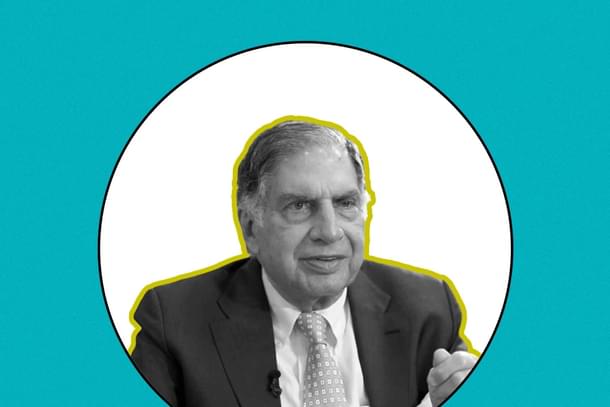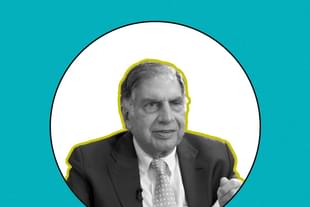Obit
Ratan Tata: Great Human Being, Super Businessman, First Indian Globalist
R Jagannathan
Oct 10, 2024, 12:36 PM | Updated 12:48 PM IST
Save & read from anywhere!
Bookmark stories for easy access on any device or the Swarajya app.


In the passing of Ratan Naval Tata (86) on 9 October, India lost an extraordinary businessman, human being, and patriot. He revived the group’s fortunes at a difficult time and proved to be a more-than-worthy inheritor of the legacy of the group’s founder, Jamshetji Tata, and the iconic third chairman of the group holding company Tata Sons, JRD Tata.
The group’s second chairman, Dorabji Tata, established the Tata Iron & Steel Company (now Tata Steel) and a hydel power plant that is now called Tata Power. JRD (known as “Jeh” to friends), the longest-serving chairman of the group (1938-1991), established Tata Engineering & Locomotive Co. (Telco, now Tata Motors) and also a fledgling Tata airline that was nationalised after independence. He was the group head who converted a bunch of unrelated businesses into India’s largest conglomerate.
The difference between the four Tata Sons heads comes from the circumstances under which they became chairmen: Jamshetji and Dorabji lived in the era of British colonialism, and their entrepreneurial zeal was rooted in the realities of their time. JRD lived in the era of the licence-permit raj and witnessed some of his greatest creations, including Air India, being run into the ground under state ownership. Ratan Tata, who became chairman of the group in 1991, was the product of a more competitive situation when the business reticence of JRD had to be abandoned and a new risk-taking entrepreneurship embraced with gusto.
The challenges that Ratan Tata faced were clearly different from those of his three predecessors. By the time he took over in 1991, after much heartburn within the group over his elevation (Tata Steel’s Russi Mody was among his rivals for chairmanship), the economic landscape was about to change dramatically.
Even after taking over, it took him a lot of time to consolidate his hold over the group. Under JRD, group companies were run as independent fiefs, with Mody leading Tata Steel, Sumant Moolgaokar at Tata Motors, Ajit Kerkar at the Taj group of hotels, and Darbari Seth at Tata Chemicals. It took Ratan Tata more than a decade to see the backs of these satraps and integrate them into one coherent conglomerate.
I have met Ratan Tata three times — twice before he was named chairman of the group and once after. I came away with the distinct impression that he was not only a complete gentleman but also equally determined to make the tough decisions necessary to rescue the group from the chaos and relative underperformance during the licence-permit raj.
The problems he had to handle included not only reining in the independent-minded group satraps but also addressing challenges from new business groups like the Ambanis and Ruias, among others. The latter had learned to navigate the final days of the licence raj by working the bureaucratic and political system to their advantage. Under JRD, who had strong reservations about dealing with the ‘system’ on its own terms, Ratan realized that he had to confront the politico-bureaucratic minefield as it existed then. Simultaneously, he needed to reorient and reignite the entrepreneurial spirit that had gone missing in the last days of JRD’s stewardship.
His first real adventure was in cars, his passion, where he led Tata Motors to develop the Indica — the first fully indigenous car in the late 1990s — and made it a success despite its lack of refinement. However, the Indica did not have a long shelf life, and in the mid-noughties, when Jaguar-Land Rover (JLR) was up for sale, he purchased it without a second thought about the high price he was paying. Despite experiencing its own ups and downs, the JLR acquisition helped Tata improve its line of cars, resulting in hit after hit over the last decade, including the best-selling Nexon. The group now also leads in electric vehicles, even though it was not the pioneer.
Tata also wanted to build an affordable small car that the middle class could use safely instead of relying on two-wheelers. This vision led to the Nano — the world’s cheapest car when it was launched — but it proved to be a disaster due to its mispositioning as a ‘Rs 1 lakh car.’ Many consumers perceived the Nano as not being a full-fledged car. Although the Nano project was abandoned nearly a decade ago, by that time, the Tatas were already on their way to producing much better cars in the mainstream market.
Another passion of Tata, aviation, led the group, under N Chandrasekaran, to acquire the struggling state airline Air India a few years ago. History will judge whether this was his greatest move or a decision the group will come to regret. But there you have the man behind the businessman: some of his business decisions were also driven by personal passions.
Like JLR, Tata again overpaid for Corus Steel, but was less fortunate this time, as the 2008 recession that followed made it over-leveraged and unprofitable. Corus forced him to start disinvesting important parts of his group, as the debt burden threatened to impact the profitable domestic operations of Tata Steel itself. Tata also bid strongly for Videsh Sanchar Nigam and won, but he struggled with its growth and profitability as its primary profit engine — the monopoly on international calls — ended with privatisation.
After his elevation to chairman of the group, Tata made some crucial divestitures and fresh investments, starting with Tata Oil Mills in the early 1990s (Tomco, sold to Hindustan Lever) and later with Idea Cellular. He gained control of Idea after a bitter battle with partner Kumar Birla, but he did not hesitate to sell it back to Birla as it was proving to be a drain. That divestiture was prescient, for the arrival of Jio in 2016-17 changed the telecom game, and the Birlas are still struggling to keep Vodafone Idea afloat.
Tomco’s sale could well be considered a mistake in hindsight because the 1991 liberalisation was about to spark a revolution in consumption patterns, and Tomco was positioned right at the starting line in a consumer-facing business. Tata believed then that the group was not very successful with consumer-facing ventures and was even alleged to be lukewarm to the idea of Titan, but Titan has paid off in spades. So has the retail giant Trent.
Of course, the pearl in the Tata necklace is Tata Consultancy Services (TCS), but credit for TCS cannot be apportioned to Ratan Tata. What he can be credited for is recognising that TCS’s huge profits held the key to unifying the group and increasing its shareholdings to levels where hostile takeovers would be difficult. TCS also provided him with the next Tata Sons chief, N Chandrasekaran, the man who stabilised and grew the group after some bitter feuding between Ratan Tata and his successor, Cyrus Mistry of the Pallonji Mistry group. Chandrasekaran has been Tata Sons chairman since February 2017.
The elevation of Mistry as group head was Ratan Tata’s biggest misjudgement and was probably the result of his own principled nature. When the selection panel zeroed in on Mistry as their choice to succeed Tata after he hung up his boots upon turning 75 in 2012, Tata accepted the recommendation without considering another factor that should have ruled out Mistry: his Pallonji Mistry group was the single biggest shareholder in Tata Sons after the Tata Trusts, and it was always doubtful if a member of a strong shareholder group would play second fiddle to Ratan Tata.
Even though Cyrus Mistry was slowly making good decisions to de-leverage the group and cut its losses, Ratan Tata felt he was too much his own man and ousted him in a boardroom coup in October 2016. Mistry deserved better, but he was simply the wrong man in the wrong job at the wrong time. Ratan Tata made the mistake that JRD, despite his belief in allowing professionals to run the group, did not make. He opted for a man without the Tata name to symbolise the group, and luckily, he lived to regret and correct that mistake.
Another (arguable) mistake was Ratan Tata’s association with Niira Radia, the public relations professional and lobbyist who helped him navigate the political-bureaucratic maze in Delhi. However, Radia turned out to be too much of a lobbyist and influence-peddler, as the Radia tapes showed. Ratan Tata’s reputation was dented, but not damaged, by the Radia tapes episode.
The mishaps notwithstanding, what Ratan Tata can be fully credited for is the discovery of the group’s entrepreneurial and risk-taking ability, which has made it a $165 billion turnover conglomerate with a Rs 365 billion market valuation as of the end of March 2024.
A dog-lover and humanitarian, one of Tata’s last acts of big-heartedness was the creation of an animal hospital in Mumbai, which opened its doors to injured and suffering pets last year.
In short, Ratan Tata can be lauded for three things: one was putting India on the global map, another was taking the Tatas from their licence-raj-induced stupor to great business success based on risk-taking and bold entrepreneurship, and third, as one of the most decent human beings the corporate world has ever produced, with a solid philanthropic record to boot.
That is a record unlikely to be matched by anyone anytime soon.
Jagannathan is former Editorial Director, Swarajya. He tweets at @TheJaggi.





